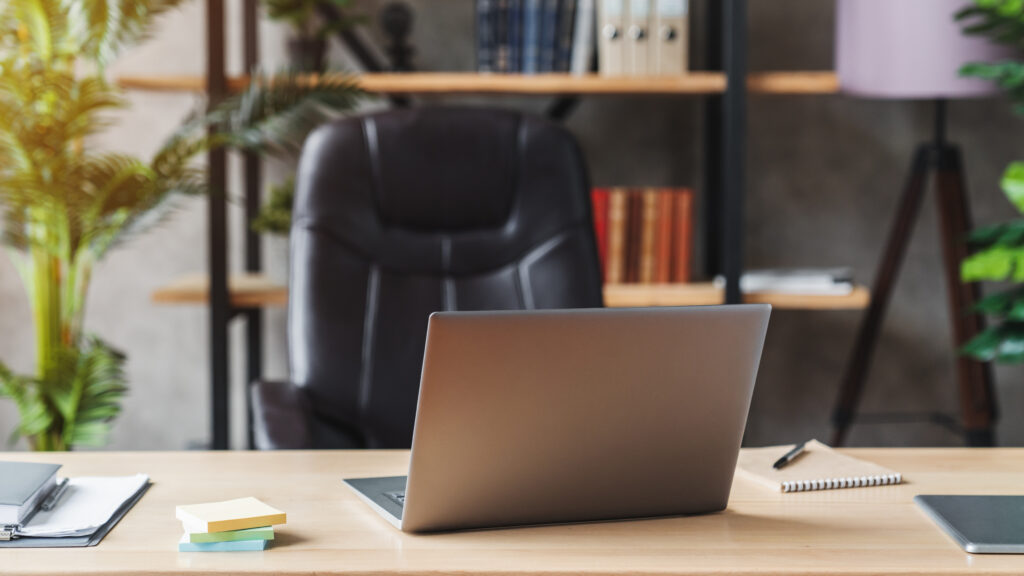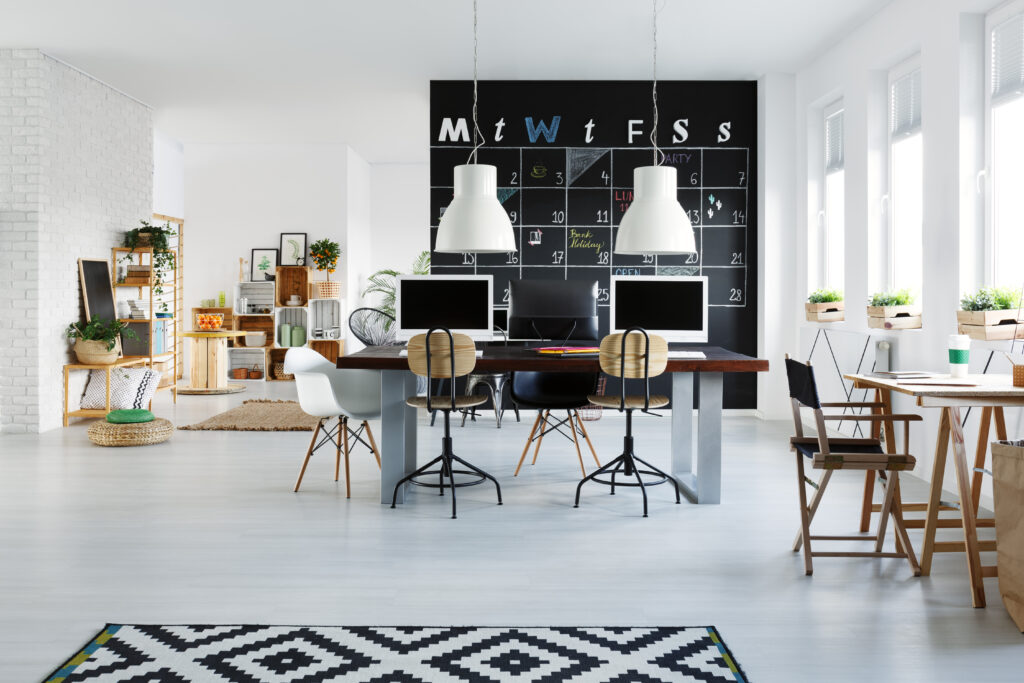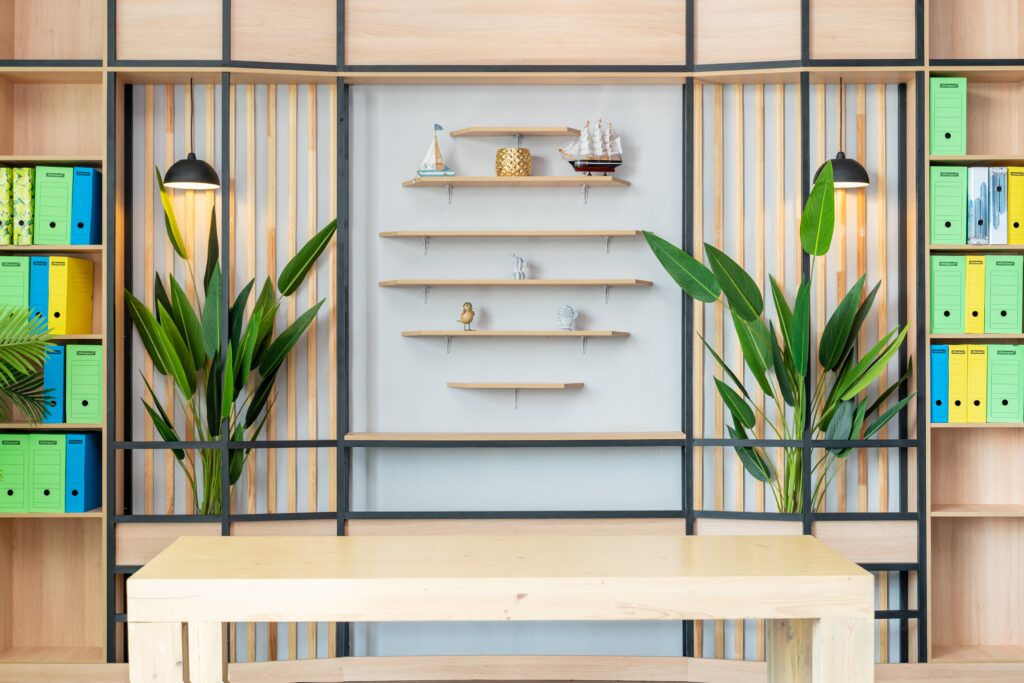Design Your Way to a Productive Workspace: Innovative Workplace Design Ideas
Creating a productive and inspiring workspace doesn’t have to be a daunting task. By implementing innovative workplace design ideas, you can easily turn any workspace into a place that motivates employees to stay productive and engaged.
Whether you’re looking for ways to increase collaboration or to create a more comfortable atmosphere, there are plenty of creative solutions that you can use to design a productive workspace.
In this blog post, we’ll explore some of the most innovative workplace design ideas that you can use to boost productivity and create an inspiring environment.
The Benefits of an Innovative Workplace Design

Do you want to boost productivity and inspire creativity among your employees? Then it’s time to take a closer look at your workplace design. A well-designed workplace has a tremendous impact on employee engagement and overall performance.
Here are some of the benefits of an innovative workplace design that you shouldn’t miss:
- Increased productivity. When you create a workspace that caters to the needs of your employees, it’s easier for them to focus and be more productive. A well-designed office helps reduce distractions, leading to fewer interruptions and better work quality.
- Better collaboration. Collaboration is the key to any successful business. When you create a workplace that fosters communication and teamwork, your employees will work together more effectively. An innovative design encourages people to exchange ideas and share information, resulting in better outcomes.
- Improved well-being. People spend most of their day at work, which means it’s crucial to create a healthy and comfortable environment. A workplace that promotes physical and mental health will help reduce stress and boost overall well-being.
- Enhanced creativity. A workplace that inspires creativity is essential in today’s business world. When employees feel comfortable, relaxed, and energized, they are more likely to come up with innovative ideas and solutions.
- Competitive advantage. An innovative workplace design can be a unique selling point for your business. A well-designed workspace can help you attract and retain top talent, leading to increased growth and profitability.
How to design a productive and inspiring environment

Designing a productive and inspiring workspace is essential to the success of any business.
It’s no secret that a happy and motivated team is more likely to work efficiently, and therefore increase overall productivity. However, creating a workspace that inspires creativity and innovation is not an easy task. Here are a few tips to help you design an environment that promotes productivity and creativity.
Start with Functionality
Before anything else, the workspace should be functional.
This means that the space should be designed with the specific work tasks in mind. Each employee’s role should be taken into account when designing the workspace, and their work stations should be set up in a way that will allow them to work efficiently. For instance, employees that spend most of their time on the phone should have a private area that is soundproof, to avoid any unnecessary interruptions.
Include Plants and Natural Elements
Including plants and natural elements in your workspace has been shown to boost employee productivity. Plants not only improve air quality, but they also create a calming and relaxing environment. Natural light is also an important aspect to consider, as it can improve the overall mood of your employees.
Incorporating standing desks, or even treadmill desks, is a great way to promote movement in the workplace. Sitting for extended periods of time can lead to decreased productivity, fatigue, and even physical ailments such as back pain. By encouraging movement, you can promote physical and mental wellness.
Design with Collaboration in Mind
Collaboration is essential for a productive and innovative workplace.
Design the workspace in a way that encourages employees to collaborate with one another. For instance, creating communal areas, like a break room or kitchen, can be a great way for employees to connect and collaborate. This allows employees to take a break and chat with their colleagues, which can lead to increased creativity and productivity.
Create an Inspiring Space
Design your workspace with your company culture in mind. The space should reflect the values and goals of your business, as well as inspire your employees to be creative and innovative. Consider incorporating motivational quotes, company mission statements, or other inspirational elements throughout the workspace.
Overall, creating a productive and inspiring workspace requires careful planning and execution. However, by considering the functionality, natural elements, movement, collaboration, and inspiration, you can design a space that will improve employee productivity and satisfaction.
The importance of ergonomics in the workplace

As we spend a significant amount of time at work, it’s essential to create a workspace that is not only productive and inspiring but also healthy for our bodies. This is where the concept of ergonomics comes in.
Ergonomics refers to the study of designing workspaces that are comfortable, efficient, and safe. An ergonomic workspace promotes physical health and reduces the risk of injuries, such as back pain, neck pain, and carpal tunnel syndrome.
A simple example of ergonomic design is a desk and chair that supports proper posture. A well-designed chair will provide adequate lumbar support, adjust to the right height, and encourage you to sit back, ensuring that you don’t slouch or strain your back. Similarly, a desk that is adjusted to the right height will prevent you from hunching over your work, causing shoulder or neck pain.
When designing an ergonomic workspace, consider the type of work that you do and how you use your workspace. For instance, if you spend long hours typing on a keyboard, you may want to invest in a keyboard tray or a desk that adjusts to the right height to reduce wrist and forearm strain. Or, if your work requires standing for extended periods, you may want to consider a standing desk that supports proper posture and reduces the strain on your feet and legs.
In summary, incorporating ergonomic design into your workspace can significantly improve your physical health, boost your productivity, and make your work experience much more comfortable. With some thoughtful design and the right tools, you can create a workspace that is both functional and enjoyable to work in.
Tips for designing an effective layout

When it comes to creating an innovative workplace design, the layout is just as important as the furniture and decor.
Here are some tips to keep in mind as you plan out the layout of your workspace:
- Consider the flow of traffic. When employees are constantly crossing paths with one another, it can create unnecessary distractions and interruptions. Aim to design a layout that minimizes traffic and encourages efficient movement.
- Maximize natural light. Sunlight can improve mood and increase productivity, so it’s important to design a layout that allows for plenty of natural light. Consider using glass walls and windows to bring in more light and create a more open feel.
- Provide designated workspaces. Different employees may have different needs when it comes to workspace, so it’s important to provide a variety of options. Some employees may prefer standing desks, while others may prefer a traditional desk and chair setup. Make sure to include designated spaces for collaboration as well.
- Minimize clutter. A cluttered workspace can lead to distraction and stress, so it’s important to keep the layout clean and uncluttered. Make sure to provide ample storage space and encourage employees to keep their workspaces tidy.
- Create a focal point. A well-designed workspace should have a focal point that draws the eye and creates a sense of interest. This could be a piece of artwork, a plant, or a unique piece of furniture.
By keeping these tips in mind, you can create an effective layout that maximizes productivity and inspires creativity in your employees.
The Role of Color in Workplace Design

Have you ever walked into an office and felt instantly drained? Or maybe you’ve stepped into a workspace that made you feel energized and motivated to work? Believe it or not, the colors used in workplace design can play a significant role in creating these emotions.
Research has shown that certain colors can affect our mood and productivity. For example, blue has a calming effect and can promote creativity, while yellow is associated with energy and can help stimulate mental activity. However, it’s important to note that color preferences can vary from person to person, so it’s essential to choose a color scheme that appeals to the majority of your employees.
When designing your workspace, consider the emotions and atmosphere you want to create. If you want a calm and relaxed environment, consider using shades of blue or green. If you’re looking for a high-energy and dynamic atmosphere, go for bright yellows or oranges. Additionally, you can use accents of colors to create a focal point or add visual interest to your space.
It’s important to note that while color can have a significant impact, it’s essential to balance it with neutral shades to prevent it from becoming too overwhelming or distracting. White or grey can serve as excellent choices to break up a colorful space.
Lastly, keep in mind that your color scheme should complement your brand and office decor. This helps create a cohesive and visually appealing environment that reinforces your company’s identity and culture.
Color can be a powerful tool in workplace design, so use it wisely to create the emotions and atmosphere you want to inspire in your employees. With the right color scheme, you can transform your workplace into a more productive, inspiring, and enjoyable space for everyone.
Creating a productive and inspiring workspace for your employees

When it comes to designing your workspace, it’s not just about the physical environment. Your workspace design can also have a big impact on your employees’ overall mood and productivity levels.
If you’re looking to create a productive and inspiring workspace for your employees, here are some tips to get you started.
First of all, think about what kind of environment you want to create. Do you want to promote collaboration and teamwork, or do you prefer a more quiet, individual workspace? Depending on your answer, you may need to design different types of workstations, such as private cubicles, shared desks, or meeting spaces.
Lighting is also crucial. Proper lighting boosts mood, productivity, and eye comfort. Use natural light whenever possible and add overhead, task, or lamp lighting as needed.
Don’t forget about color, either. The colors you choose can affect mood and creativity. Blue, for example, is often associated with calmness and focus, while green can promote a sense of relaxation and renewal. Yellow and orange are associated with energy and creativity, while red can be invigorating and intense.
Lastly, remember to add some personal touches to your workspace. Consider incorporating artwork, plants, or other decorative touches that reflect your company’s values and culture. When your employees feel comfortable and inspired in their work environment, they’ll be more motivated to perform their best.
Ready to sell your property? Give us a call today and learn more about our professional photography services and marketing that can boost your property listing!
Plus, explore our virtual assistant coaching program to level up your business. Don’t forget to tune into our new podcast for even more valuable insights!
